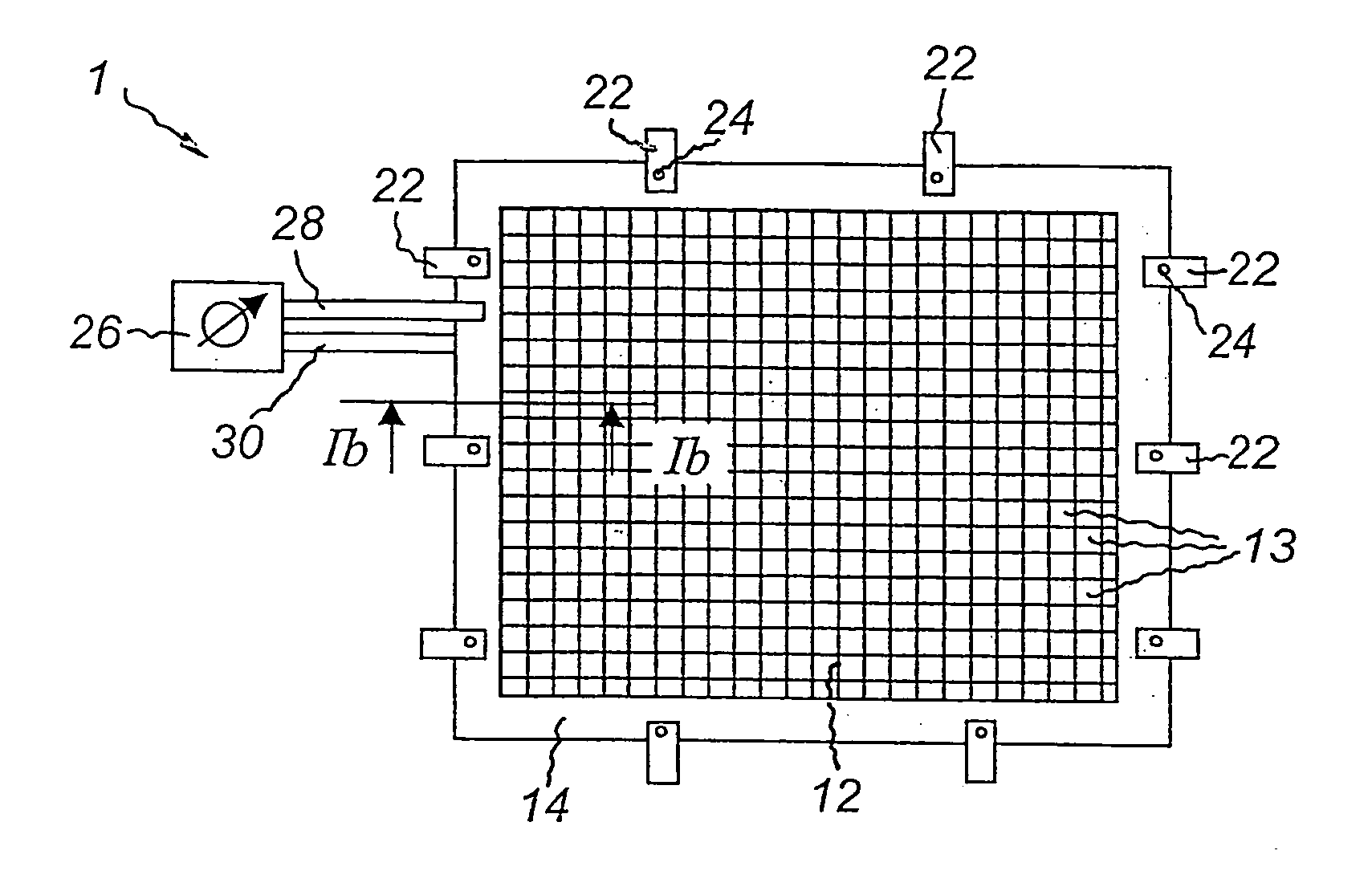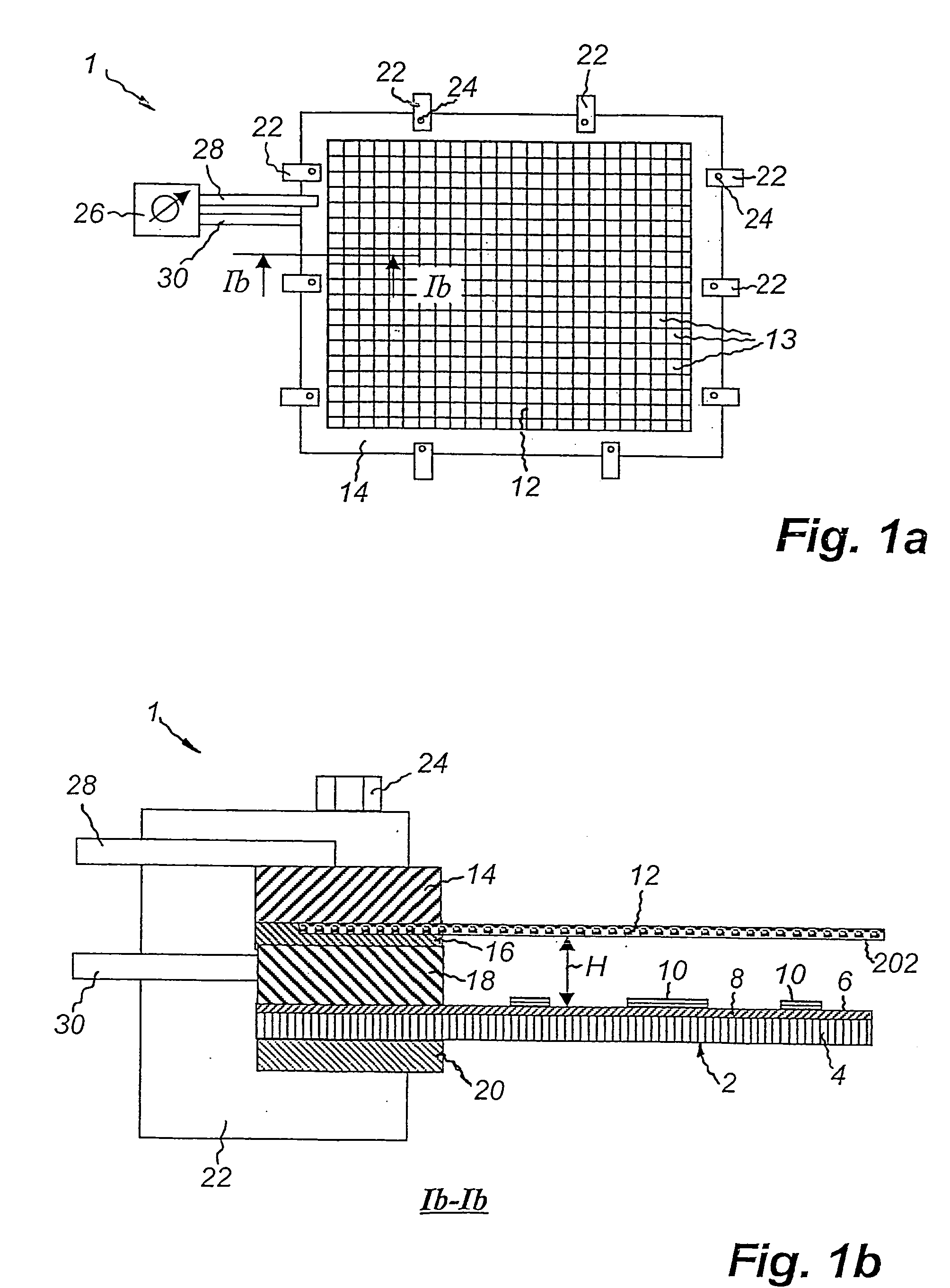Method of etching copper on cards
a technology of etching and copper, which is applied in the field of etching copper, can solve the problems of excessive insufficient etching of portions of boards, and reduced copper in the copper layer which is oxidised and converted into copper ions, and achieves the effect of low defect rate of etching boards
- Summary
- Abstract
- Description
- Claims
- Application Information
AI Technical Summary
Benefits of technology
Problems solved by technology
Method used
Image
Examples
example 1
[0076] A plurality of electrolyte mixtures were prepared of water and the compounds described below. In all cases but one, use. was made of 100 g salt per litre of water. A cathode and an anode were immersed in the electrolyte at a distance of 1 cm from each other and a voltage of 2.0. V was applied between the cathode and the anode. The anode had the form of a circular surface with a diameter of 2 cm. Table 1 shows the electric current that was measured in the different electrolyte mixtures.
TABLE 1Currents measured in different electrolyte mixtures.Compounds added to waterCurrent (A)FeSO40.09Fe2(SO4)30.23CuSO40.17Na2S2O80.26CuSO4 + Fe2(SO4)3 +0.40Sn(SO4)2 + HF *
* This electrolyte mixture contained 20 g CuSO4, 80 g Fe2(SO4)3, 8 g Sn(SO4)2 and 15 g HF per litre of water.
[0077] As appears from Table 1, an electrolyte containing Cu2+, Fe3+, Sn4+ and HF provides significantly higher current and thus lower polarisation than an electrolyte containing copper ions only.
example 2
[0078] A board in the form of a copper laminate intended for the manufacture of circuit boards had a size of 2.5×2.5 cm. The copper laminate had on a flat side a copper layer with a thickness of 18 μm, on which a photo sensitive coating was applied. A photographic process was used to transfer a pattern from a master to the coating.
[0079] The pattern included 50 μm lines / gaps, i.e. lines, for example electric conductors, and gaps with a width of about 50 μm. An electrolyte was prepared by dissolving Fe2 (SO4)3 and CuSO4 in water to a concentration of 25 0.25 mol / l Fe30+ and 0.05 mol / l Cu2+. The pH of the electrolyte was adjusted by means of sulphuric acid to pH=0.6. The copper laminate and a sheet-like cathode were then placed in a container holding said electrolyte. A voltage of 2 V was applied between the copper laminate 30 and the cathode, and the current intensity was measured to about2 A. The amount of Fe30+ in the electrolyte corresponded to a great excess in relation to the a...
example 3
[0081] A copper laminate was etched under the same experimental conditions as in Example 2, except that NaCl was added to the electrolyte in such an amount that the concentration of Cl was 0.25 mol / l.
[0082] No precipitation was observed on the cathode. When examining the etched copper laminate under a microscope, it was found that the sides of the lines that had been etched were to a large extent frayed and in some places the lines were completely broken. Traces of “islets” of copper could also be observed on the copper laminate. An addition of chloride ions thus seems to deteriorate the etching result.
PUM
| Property | Measurement | Unit |
|---|---|---|
| voltage | aaaaa | aaaaa |
| thickness | aaaaa | aaaaa |
| thickness | aaaaa | aaaaa |
Abstract
Description
Claims
Application Information
 Login to View More
Login to View More - R&D
- Intellectual Property
- Life Sciences
- Materials
- Tech Scout
- Unparalleled Data Quality
- Higher Quality Content
- 60% Fewer Hallucinations
Browse by: Latest US Patents, China's latest patents, Technical Efficacy Thesaurus, Application Domain, Technology Topic, Popular Technical Reports.
© 2025 PatSnap. All rights reserved.Legal|Privacy policy|Modern Slavery Act Transparency Statement|Sitemap|About US| Contact US: help@patsnap.com



